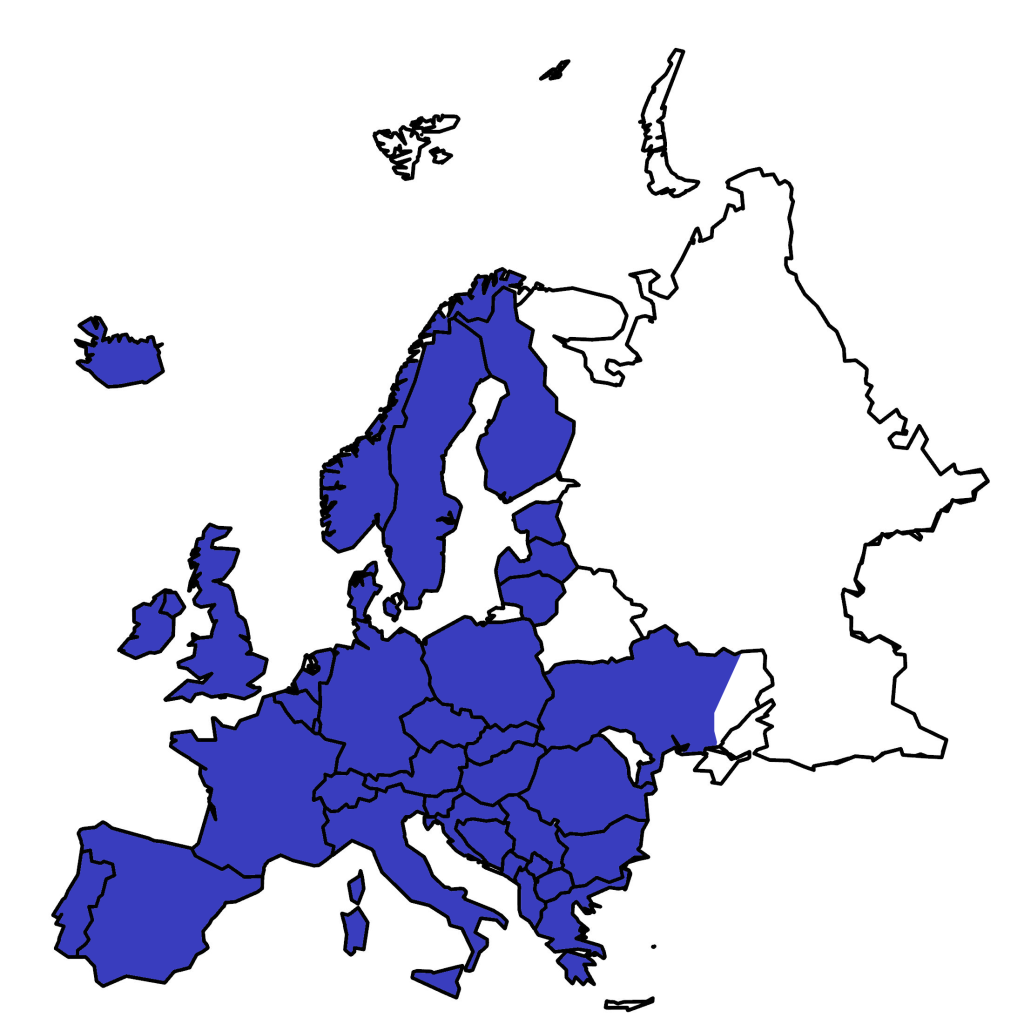European Union in 2030

The 30 member states that make up the EU have adopted an internal single market with free movement of goods, services, capital, and labor. The EU is foremost a customs union, that aims to bolster Europe’s trade position and its political and economic weight in international affairs.
European Unions’ primary rivals in the game are the Russian Federations and the Middle Eastern Union.
The European Union’s traditional allies have been the United States and South American Union.
In the year 2034, the European Union stands at a pivotal moment in its history, facing a formidable convergence of challenges that test the resilience of its member states. Once heralded as a beacon of economic and political unity, the EU now confronts a crossroads marked by serious economic and climate crises, interwoven with the promises and perils of advanced technology.
The economic landscape of the EU has been profoundly impacted by global uncertainties, prompting a profound reevaluation of its economic foundations. The legacy of previous financial crises has left deep scars, while new and unforeseen challenges have emerged, necessitating innovative solutions to restore stability and foster growth. The unity of the EU’s member states is put to the test as they seek common ground in the pursuit of shared prosperity and social welfare.
Climate change, an omnipresent force reshaping the global order, has also taken a toll on the European Union. Rising sea levels encroach upon low-lying coastal regions, posing existential threats to several member states. Extreme weather events have become distressingly common, wreaking havoc on agricultural production, and affecting the livelihoods of millions. The imperative to transition to sustainable energy and environmentally conscious policies stands as an unparalleled challenge, requiring collective determination and adaptation.
At the heart of the European Union’s journey lies its quest for advanced technology, a realm in which the EU has showcased tremendous potential. In the pursuit of cutting-edge innovation, the member states have harnessed the power of artificial intelligence, renewable energy, and space exploration, aiming to lead the world in technological advancements. Yet, as technology shapes societal interactions and economic systems, the EU grapples with questions of regulation, privacy, and equitable access to these advancements.
As the European Union endeavors to overcome these multidimensional challenges, its unity and shared vision will be put to the test. The course taken by the EU in navigating its economic and climate crises will determine its standing in the global arena and its ability to assert itself as a leader in advanced technology. The choices made in this critical period will shape the trajectory of the EU and the lives of its citizens, transcending borders and generations.
In the chronicles of time, the future of the European Union unfolds—a narrative of perseverance, adaptability, and the pursuit of collective progress. As the EU seeks to redefine its path, history will bear witness to the journey of a union striving to transform adversity into an opportunity for a more sustainable, prosperous, and technologically advanced future.